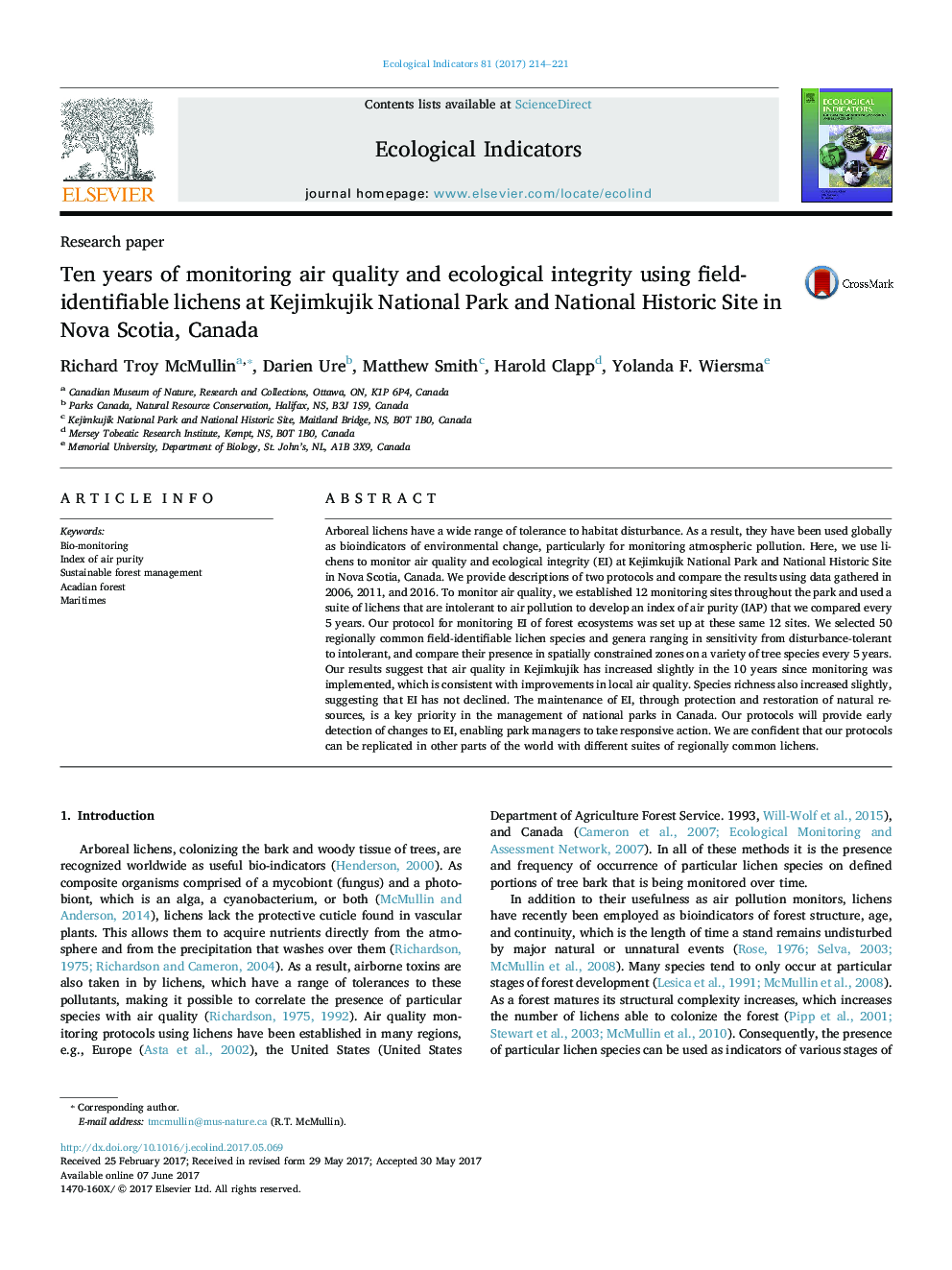| Article ID | Journal | Published Year | Pages | File Type |
|---|---|---|---|---|
| 5741425 | Ecological Indicators | 2017 | 8 Pages |
â¢A regionally specific suite of lichen species was successfully selected to monitor air quality and ecological integrity.â¢New monitoring protocols for air quality and ecological integrity were developed and successfully implement.â¢A positive correlation between the abundance of pollution intolerant species and a decline in air pollution was shown.â¢Regionalsuites of lichens can be used as a management tool for early detection ofdisturbances and environmental changes.
Arboreal lichens have a wide range of tolerance to habitat disturbance. As a result, they have been used globally as bioindicators of environmental change, particularly for monitoring atmospheric pollution. Here, we use lichens to monitor air quality and ecological integrity (EI) at Kejimkujik National Park and National Historic Site in Nova Scotia, Canada. We provide descriptions of two protocols and compare the results using data gathered in 2006, 2011, and 2016. To monitor air quality, we established 12 monitoring sites throughout the park and used a suite of lichens that are intolerant to air pollution to develop an index of air purity (IAP) that we compared every 5 years. Our protocol for monitoring EI of forest ecosystems was set up at these same 12 sites. We selected 50 regionally common field-identifiable lichen species and genera ranging in sensitivity from disturbance-tolerant to intolerant, and compare their presence in spatially constrained zones on a variety of tree species every 5 years. Our results suggest that air quality in Kejimkujik has increased slightly in the 10 years since monitoring was implemented, which is consistent with improvements in local air quality. Species richness also increased slightly, suggesting that EI has not declined. The maintenance of EI, through protection and restoration of natural resources, is a key priority in the management of national parks in Canada. Our protocols will provide early detection of changes to EI, enabling park managers to take responsive action. We are confident that our protocols can be replicated in other parts of the world with different suites of regionally common lichens.
